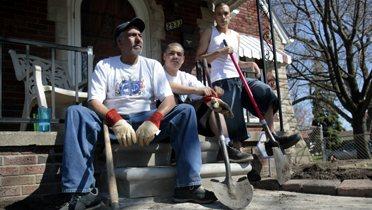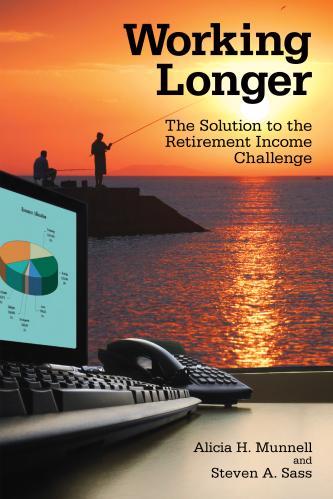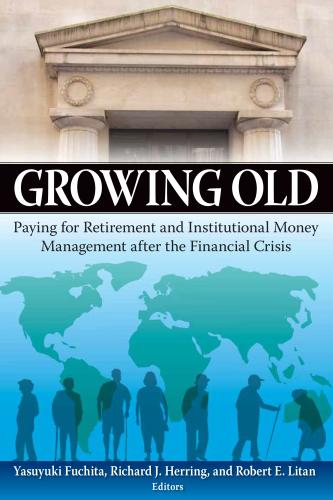During the 2016 campaign, more talk was about jobs—which most people have—than about retirement security—which most people don’t have. That’s unfortunate because many more people are worried about retirement than jobs, the problem’s easier to solve, and voters would take notice if Washington actually did its job, instead of making excuses and blaming someone else.
Running out of money in retirement is the #1 financial fear, not just of seniors, but of all Americans.1 Half of those approaching retirement age have no pension and virtually no retirement savings. All they have to live on is Social Security, which they know is underfunded and are told—repeatedly (but erroneously)—will go bankrupt.
Concerns about Social Security’s finances contribute to retirement insecurity. Last year, AARP found that most people lack confidence in Social Security.2 A 2011 Pew survey found that 42 percent of millennials and 35 percent of Gen Xers think they will get nothing from Social Security at all.3 Their anxiety is compounded by the sense that Washington won’t do anything about it. Most people throw up their hands and say “I’ll just keep working”—even though many physically cannot.
Our retirement systems can be fixed. If President Trump and both parties in Congress sat down and negotiated bipartisan reforms, they could both ensure that Social Security is always there and make it a better safety net. (They could also enable the tens of millions who don’t have a workplace retirement program to save automatically and affordably, but that’s a subject for another blogpost.) These steps would both restore faith in government and provide security to tens of millions—Millennials, Gen Xers, and Boomers—most of whom now worry about their so-called “golden years.”
Preserve Social Security – and Improve It
A century ago, the people in America most likely to be poor were the elderly who could no longer work. Social Security changed that. It is by far the most important source of retirement income for most Americans and has helped lift millions of seniors out of poverty. But this success comes with challenges, too:
- As people live longer, current payroll taxes will not be enough to pay for all the benefits that have been promised to future retirees. They will have to be raised.
- For many, current benefits are insufficient: even with Social Security, they will become considerably poorer when they retire or their spouses die.
This has led to a tension has been between those, mostly Democrats, who want to expand benefits, particularly for those who don’t have other retirement income, and those, mostly Republicans, who don’t want higher Social Security (or other) taxes and so want to cut benefits. (Interestingly, most people support raising taxes if the funds are used for Social Security.) During the campaign, then-candidate Trump split the difference: He opposed any benefit cuts for Social Security, but never mentioned the payroll taxes that pay for the program.
The divides between Republicans and Democrats leads many to despair that nothing can be done. Nonetheless, both history and current events suggest otherwise: In the 1980s, a Republican White House and a Democratic Congress, working from the recommendations of an independent commission, negotiated changes that preserved Social Security for half a century.
This past year, a bipartisan group organized (appropriately enough) by the Bipartisan Policy Center4 proposed a series of changes that would make Social Security benefits a better and more reliable safety net and raise benefits for women and the working poor, by providing:
- A minimum benefit because, for many people, Social Security is all they have.
- Better treatment of surviving spouses, generally women, whose benefits were often cut drastically when their higher-earning spouse dies.
They also proposed to change benefit calculations and cost-of-living adjustments in various ways that would cut overall benefit levels while making the program more targeted to those who need it most. They would, for example, continue the gradual increase in Social Security’s full retirement age and maximum benefit age, beginning in the next decade and increasing gradually over the next five decades.
At the same time, they proposed increasing the payroll tax rates for employers and employees by a total of 1 percent, increasing the income subject to those taxes, and taxing benefits fully for those earning more than $250,000.
The result of all these changes? Social Security would be fully funded for the next 75 years, perhaps longer, and would be a(n even) better safety net for more people than it is now.
The Third Rail—or a Road to a Secure Retirement?
Social Security is often called the “third rail” of politics. The conventional wisdom is that no changes are likely because all such changes must be bipartisan—and, in recent years, Democrats and Republicans have rarely agreed on anything.
Nonetheless, recently, some Democrats and Republicans have engaged and made sensible joint proposals. There are few, if any, actions the next Administration and Congress could agree on that would accomplish more to provide economic security for all Americans.
-
Footnotes
- “Since Gallup began polling Americans in 2001 about their financial concerns, a majority have continually been worried about not being able to afford retirement—the top overall concern in each of those 16 years. Americans were less likely to worry about retirement in the early 2000s, with percentages ranging from 52% to 54%, but 60% or more have worried about retirement since 2005, including a peak of 67% in 2012.” (Gallup “Economy & Personal Finance Survey” 2016).
- “Social Security 80th Anniversary Survey Report: Public Opinion Trends” (AARP 2015)
- “The Generation Gap & the 2012 Election” (Pew 2011)
- “Securing Our Financial Future: Report of the Commission on Retirement Security and Personal Savings” (Bipartisan Policy Center 2016)










Commentary
Op-edKeep Social Security great (again)
December 23, 2016